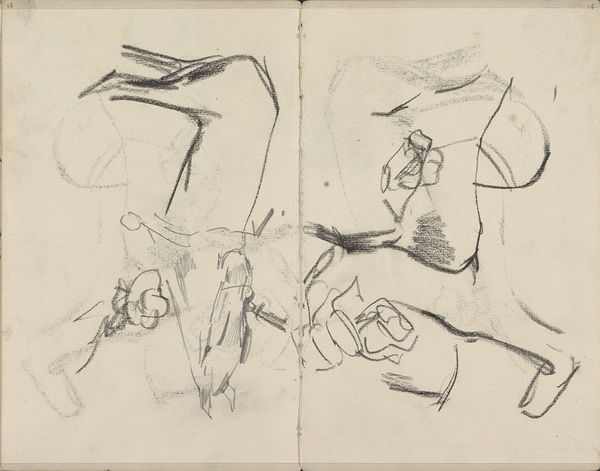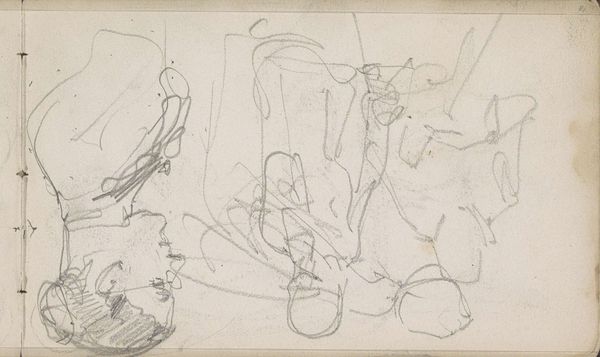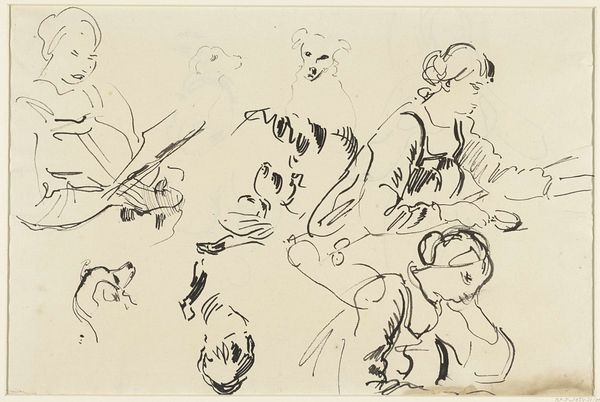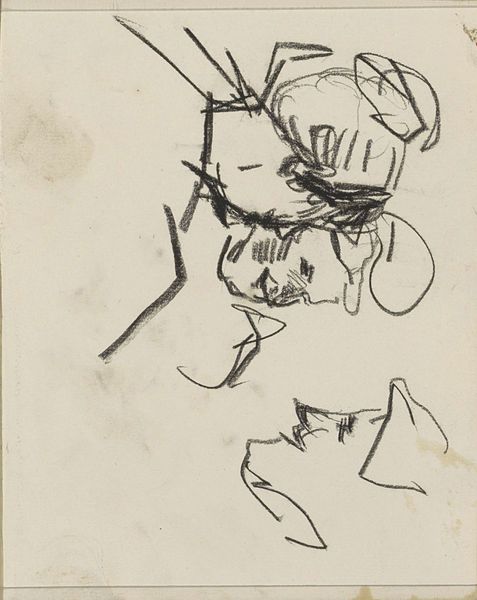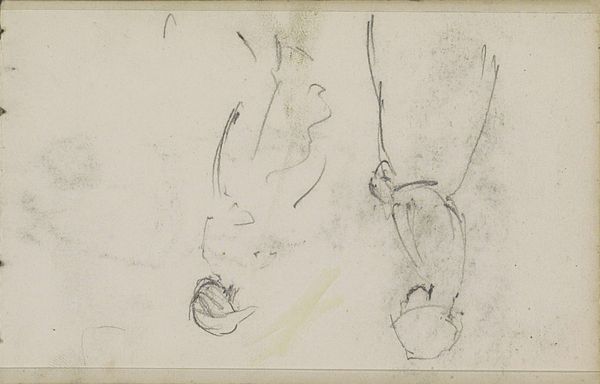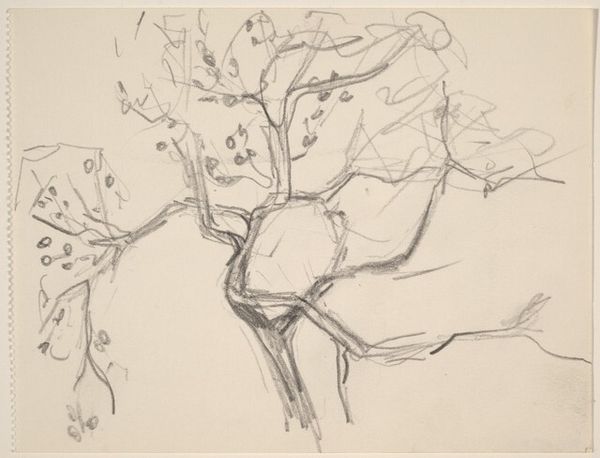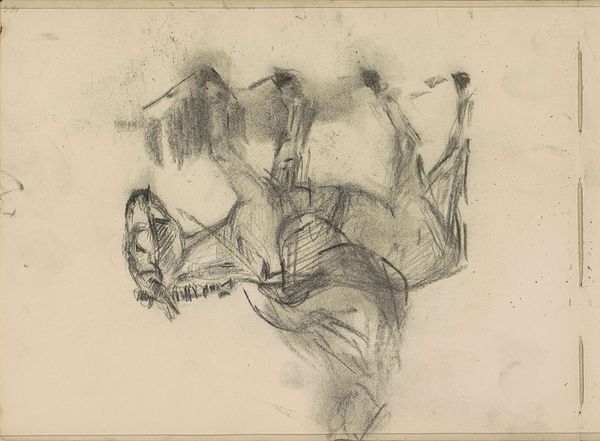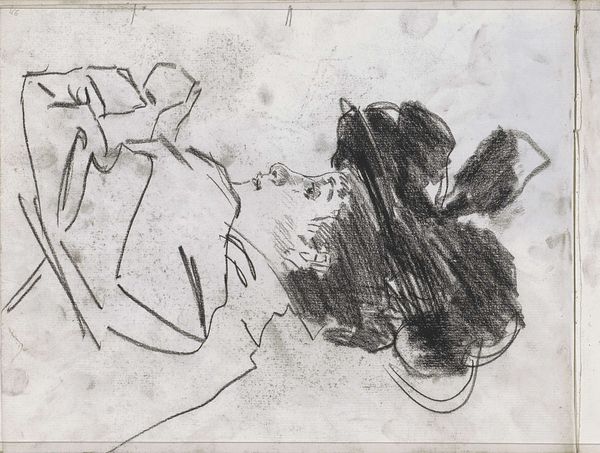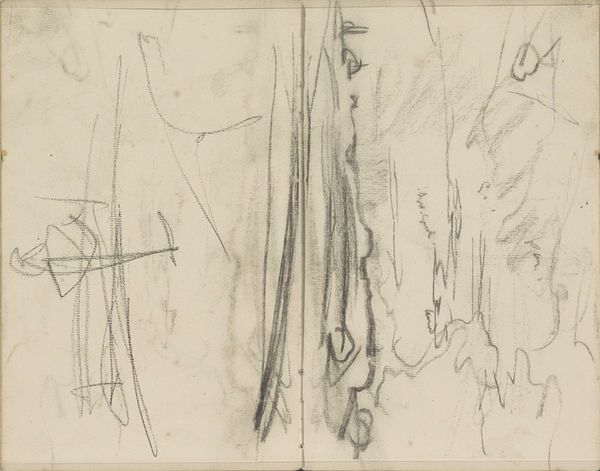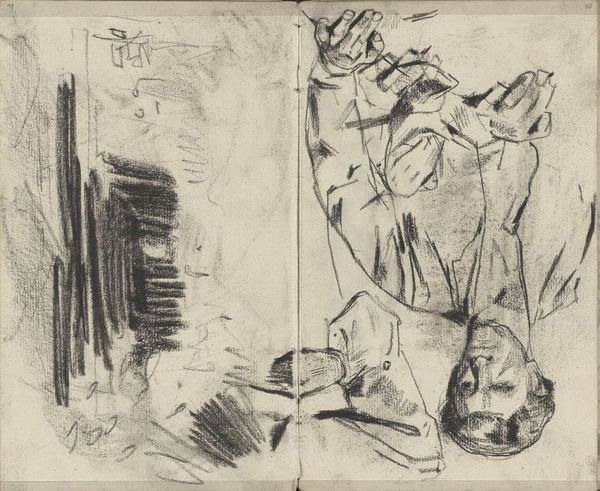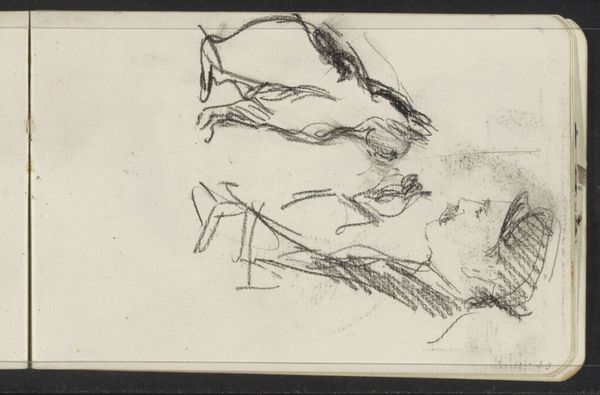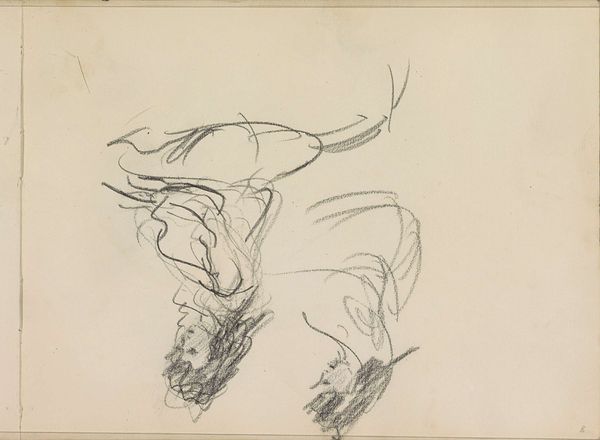
Copyright: Rijks Museum: Open Domain
Editor: Right now, we're looking at "Figuurstudies" by George Hendrik Breitner, made sometime between 1886 and 1898. It appears to be a sketch in graphite, currently held at the Rijksmuseum. The figures are very rough and feel almost… frantic. What can you tell me about this work? Curator: Well, immediately I see an artist deeply engaged in the *process* of observing and recording bodies in motion. Consider the material reality: quick, inexpensive graphite on paper. These aren't finished, idealized forms, but rather studies, experiments almost, documenting the labour of seeing and the labour of representing what’s seen. Breitner wasn’t interested in presenting an illusion. Instead he focuses on his own experience. Editor: So it’s not just about capturing the figures, but the act of *trying* to capture them? Curator: Precisely! It pushes against traditional hierarchies. Historically, quick sketches were seen as subordinate to the finished painting. Breitner, by exhibiting these kinds of works, elevates the sketch. But think even bigger: what social factors elevated the need for artists to begin experimenting in this way? Why capture figures in the midst of industrial and social change? Editor: It's like he’s using the material—the graphite, the paper—as a tool to understand not just the body, but also his own interaction with the world around him. Curator: Exactly. Breitner here uses readily available and affordable materials to document life with raw, unsentimental immediacy. So it shifts away from the idealized to what an artist actually uses. It forces us to reconsider the making. Editor: I've never considered sketches quite like that, but I find your take quite insightful! Curator: Glad I could point that out, sketches are really cool ways to understand artists better.
Comments
No comments
Be the first to comment and join the conversation on the ultimate creative platform.
